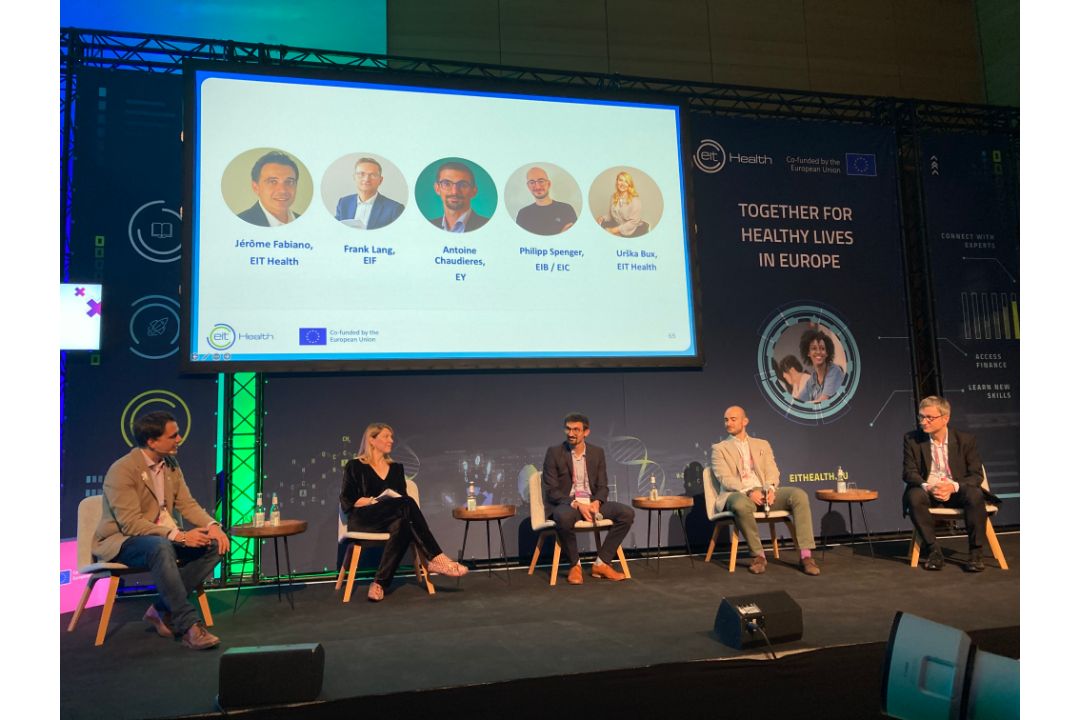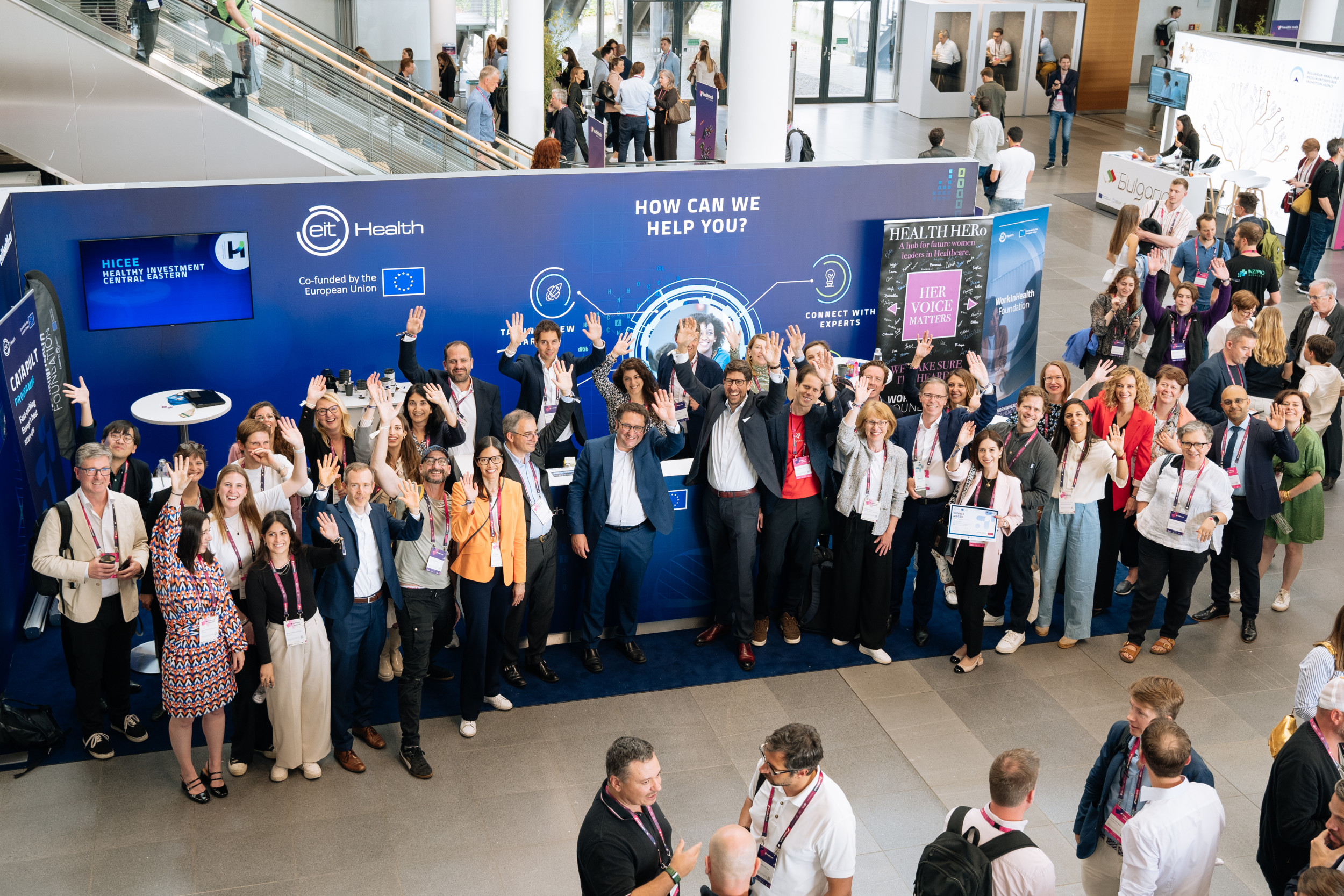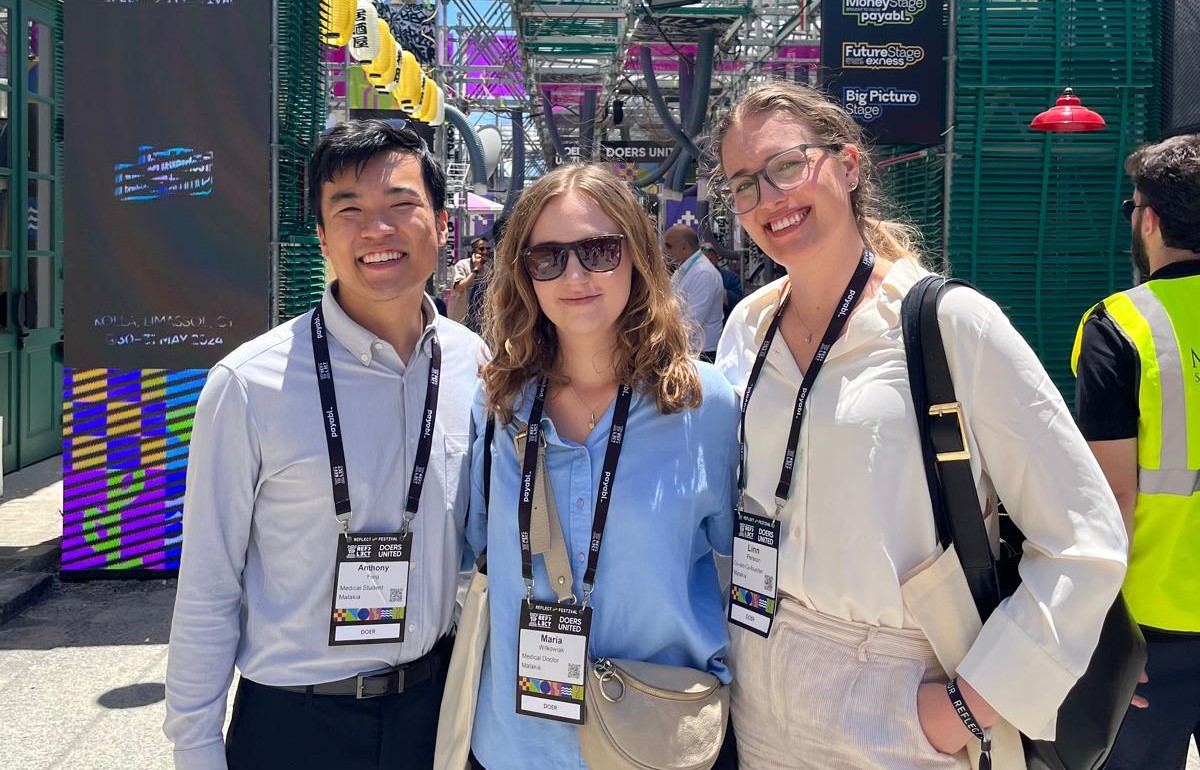5th December 2023
Orgavalue from Portugal won the 2023 InnoStars Awards. Founded by medical students in Porto, Orgavalue’s mission is to eliminate organ transplant waiting lists. The company is developing a unique method to bioengineer personalised human organs by de-cellularising organs from the donor and then re-cellularising the scaffold with patient-derived cells. This could help reduce the risk of rejection of the transplanted organ and eliminate organ waste. They aim is to reach the market by 2028, initially focusing on liver transplants, representing a market opportunity of €8.8bn. In his interview for EU-Startups, Rodrigo Val d’Oleiros, CEO and Founder of Orgavalue, provides more detailed understanding of their solution and future plans.
What inspired the founding of Orgavalue, and what challenges in the healthcare sector are you aiming to address?
Companies like ours are often founded to address critical gaps in healthcare, such as organ shortages for transplants. Our mission is to eliminate the organ transplant waiting list. The WHO estimates that only 10% of the worldwide need for organ transplantation is met. The mismatch between the need for transplants and donor supply is exacerbated by the rising prevalence of health problems reducing the donor pool. The inspiration likely comes from a combination of scientific advancements, the founders’ backgrounds, especially in medicine and a desire to improve patient outcomes.
Can you explain the core bioengineering technologies that Orgavalue uses to develop new human organs?
We harness advanced bioengineering techniques, including tissue engineering and stem cell technology, augmented by medical devices, to craft bespoke human organs. The cornerstone of this innovation is the anatomically precise organ scaffold derived from cadaveric organs, chosen for their structural and vascular compatibility. Through a meticulous process known as perfusion decellularization, we remove cellular material by infusing a gentle detergent via cannulation. This procedure retains the integral architecture and intrinsic properties conducive to regeneration, adhesion, and plasticity, maintaining the organ’s blueprint.
Subsequent recellularization involves seeding this scaffold with viable human cells within a bioreactor, where they are systematically introduced into the extracellular matrix (ECM). This controlled environment promotes cell growth and organ functionality, culminating the process in as little as one month. In contrast to the less effective immersion decellularization, which compromises the scaffold’s integrity and its vascular system, our perfusion method ensures rapid, non-toxic, and efficient cell removal. This generates a robust and native scaffold that is not only cost-effective and scalable but also primed for the integration of patient-specific cells.
This scaffold is then receptive to the patient’s own cells, mitigating the risk of immune reactions and rejection post-transplant. By circumventing the flaws of previous methods, Orgavalue’s technology not only conserves the original organ structure but also optimizes it for future clinical applications, ensuring the organs are recognized and accepted by the patient’s body, thus revolutionizing organ transplantation.
How do the organs produced by Orgavalue differ from those used in traditional transplants in terms of safety and availability?
Our technology stands apart from traditional transplant methods by offering organs with high functionality and low immunogenicity, closely mirroring human organ standards. These bioengineered organs possess an anatomical structure and extracellular matrix (ECM) composition akin to native tissue, achieved through a sophisticated decellularization process that removes unwanted biological materials, ensuring the scaffold’s integrity which is crucial for successful recellularization. By employing human cells specific to each organ type, Orgavalue harnesses the cells’ natural affinity for adhesion, plasticity, and proliferation, significantly reducing the risk of severe immune reactions and organ rejection compared to alternatives such as genetically modified porcine cells or 3D Bioprinting.
Orgavalue’s technology is not only effective and efficient but also environmentally conscious, aligning with the European Green Deal standards by avoiding toxic solvents. Their recellularized grafts have shown promising preclinical results. Furthermore, their scalable multi-organ platform has the potential to extend beyond livers to other organs such as lungs, pancreas, hearts, and kidneys.
For availability, Orgavalue envisions an “Organ Bank” where cleaned, cell-free organ matrices can be stored at low temperatures for extended periods, enhancing the accessibility of organs for transplantation. This approach addresses the critical shortage of human organs, providing a lifeline for the thousands waiting for transplants and offering a future where organ availability aligns more closely with demand.
What ethical considerations do you encounter in the field of bioengineered organs, and how do you address them?
Ethical challenges in bioengineered organs include ensuring equitable access, managing patient expectations, and navigating the moral implications of creating human tissues and organs. By addressing these issues Orgavalue involves strict ethical guidelines and engaging with ethical boards of our future customers, national institutions in Portugal and public stakeholders. Organ bioengineering can avoid ethical dilemmas associated with xenotransplantation (engineering of animal organs for transplantation into humans), our reliance on human (and animal) organ donors and the transparent character of clinical organ transplantation. The use of a patient’s own stem cells as the cellular source to colonize the organ will not go against some considerations in debate in the frame of the Council of Europe Convention for the Protection of Human Rights and Dignity of the Human Being with regard to the Application of Biology and Medicines: Convention on Human Rights and Biomedicine. The potential for distributed and local production of Orgavalue products also implies increased responsibility for users, not only regarding the safety and quality standards in production but also concerning individual behaviour.
What regulatory challenges do you face in bringing bioengineered organs to the healthcare market, and how are you tackling them?
Bringing bioengineered organs to market involves navigating complex regulatory landscapes. This includes proving safety and efficacy through clinical trials and meeting stringent standards set by regulatory bodies like the FDA. Companies often collaborate with regulatory experts to address these challenges. Since our product is composed of safe products approved for the biomedical industry and cellular protocols already approved and used by the pharma industry, our process generally satisfies the requirements of the applicable statutes and regulations implemented by EMMA/FDA, ensuring the safety, with significant impact on the transfer of organ bioengineering process to the market by setting standards and regulations for testing, approval, and commercialization.
What does the research and development process look like at Orgavalue?
The R&D process involves stages of preclinical testing, clinical trials, and scaling up production. This process is interdisciplinary, involving bioengineers, clinicians, and regulatory specialists. Our existing R&D facilities will be redesigned to support preclinical and initial clinical studies, leveraging our manufacturing design and experience. The human raw materials for these facilities are available from two alternative suppliers and potential future customers in Portugal.
Are there specific types of organs you are focusing on currently, and what is the roadmap for future organ development?
We are currently focused on pioneering the domain of liver transplantation, leveraging cutting-edge bioengineering technologies to address the critical shortage of transplantable organs. Looking ahead, our roadmap is ambitious: we aim to apply our bioengineering capabilities to construct viable lungs, pancreas, hearts, and kidneys.
How has Orgavalue been funded so far, were there any key collaborations or partnerships that have been crucial to Orgavalue’s progress?
Our financial backbone has primarily been shaped through grants and awards, with a significant portion coming from EIT Health. Strategic partnerships with leading national academic entities have been pivotal to our advancement. These partnerships include collaborations with the Institute for Research and Innovation in Health at the University of Porto, the University of Porto’s Science and Technology Park, and CoLAB TRIALS from the NOVA Medical School in Lisbon. Together, we have established a distinguished coalition aimed at fostering clinical research excellence. The cornerstone of our collaborative efforts lies in the sharing of technology, joint research initiatives, and synergistic clinical trial endeavours.
You recently won the Inno Stars Award. How did being a part of EIT Health support your journey from the lab to the market?
Orgavalue’s journey from concept to commercialization has been significantly accelerated by the InnoStars Award and the comprehensive support from EIT Health. This backing has not only provided crucial funding but has also opened doors to a wealth of networking opportunities, expert mentorship, and enhanced visibility within the health innovation sector. EIT Health has been a cornerstone supporter from our inception, profoundly influencing our growth and future market presence. The endorsement from EIT Health has been instrumental in our mission to improve quality of life through innovative health solutions. Being part of the EIT Innovation Community has also been transformative, facilitating our integration into a broader ecosystem and enabling us to secure financial and strategic investment from both the private and public sectors, further fueling our advancement
What advice would you give to aspiring entrepreneurs looking to enter the biotechnology and health startup space?
Biotech entrepreneurs are tasked with the unique challenge of discerning the underlying issues within healthcare, often obscured, and known more by their symptoms than their root causes. To innovate effectively, they must see beyond what is apparent, even when healthcare professionals themselves might not recognize the core problem. The path for biotech startups is notably arduous, necessitating substantial investment in research and development. Entrepreneurs must navigate a protracted journey through development and regulatory landscapes, often requiring extensive mentorship and collaboration.
Maintaining a pulse on the pulse of biotechnological breakthroughs and evolving regulations is essential for biotech entrepreneurs. This sector stands apart for its inherent uncertainties and the high-stakes nature of its ventures. A select group of investors possesses the foresight, expertise, and capital necessary to nurture biotech-growing startups. They are the ones who see beyond the allure of immediate gains, recognizing the transformative potential that biotech holds for the future.
Investor trends are often swayed by the prevailing social and economic feelings, with many placing a premium on short-term profitability over long-term benefits. This can pose a challenge for biotech innovations, which are high-tech endeavours with complex paths to market – far removed from the simplicity of a viral app.
Biotech pioneers must therefore embody tenacity and inventiveness, ready to traverse an untrodden path. Their triumph relies not solely on groundbreaking discoveries but equally on their capacity to galvanize and maintain investor trust over extensive development cycles. In a field where the end products are as much about scientific precision as they are about market timing and public reception, the ability to balance these elements is what will define the next wave of biotech success stories.
New report reveals skills gaps impeding healthtech innovation

A must-read for healthcare start-ups and venture capitalists
Perspectives on the HealthTech ecosystem

Key takeaways from the health.tech conference 2024
